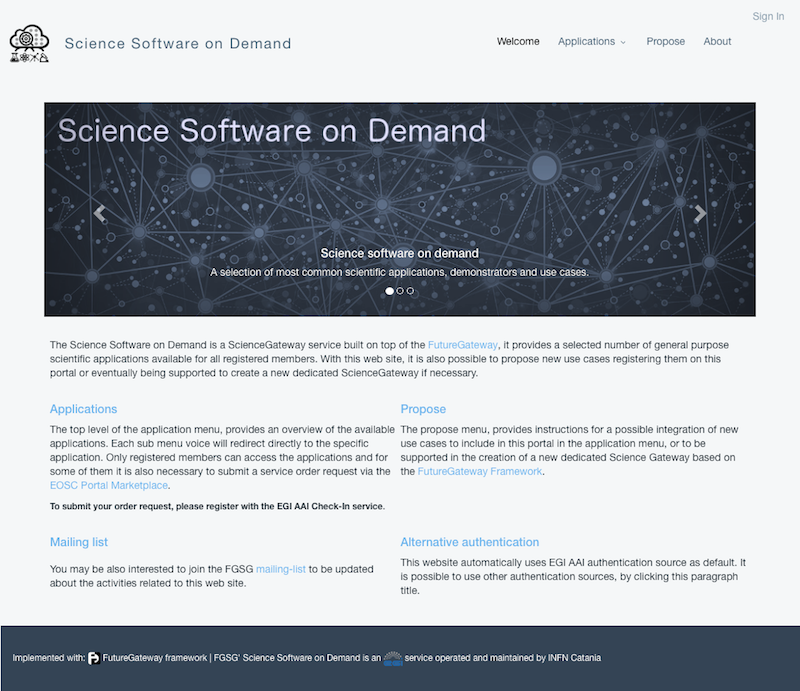EGI Science Software on Demand
About
In the context of the EOSC-hub european project, has been developed the Science Software on Demand(SSOD) a Science Gateway portal based on FutureGateway Framework(FGF) and registered as service in the EGI infrastructure. The portal principally acts as a demonstrator and it provides a set of scientific applications as demonstrative use cases. The SSOD relies on a backend solution named FutureGateway ScienceGateway(FGSG), a combination of hardware and software solutions making use of the FGF components to host one or more Science Gateways. Moreover thanks to its fully dockerized implementation each science gateway can offer virtualized resources to its users in the form of SaaS and PaaS.

Site structure
The SSOD web site is tructured in three main sections:
- The first provides just a brief description of the website
- The second section is dedicated to the installed ScienceGateway Applications
- The third section is dedicated to experts who may be interested to integrate a new use case in the SSOD or be supported in the creation of a new instance of the service based on the FGF.
Below image explains description the SSOD internal architecture and its relatioship regardless the FGSG back-end environment.

Applications
The SSOD comes with three demonstrative applications
- RStudio - This application, demonstrates how it is possible to reserve private resources to communities members just accessing the Science Gateway. This application allows to instantiate a single personal instance of th R-Studio web interface.
- Chipster - Chipster is a user-friendly analysis software for high-throughput data, this application allows to add portal user credentials and access Chipster services.
-
REPAST PALMS - REPAST is a family of advanced, free, and open source agent-based modeling and simulation platforms that have been under continuous development for over 15 years. The PALMS experiment is a micro-simulation that using REPAST, predicts the lifelong physical activity behaviour of a population taking into account individual characteristics and their effect on physical activity over time. The model produces individual and aggregated quantitative outputs for quality of life and health conditions related costs.
Leave your comments
Back to the main news page.